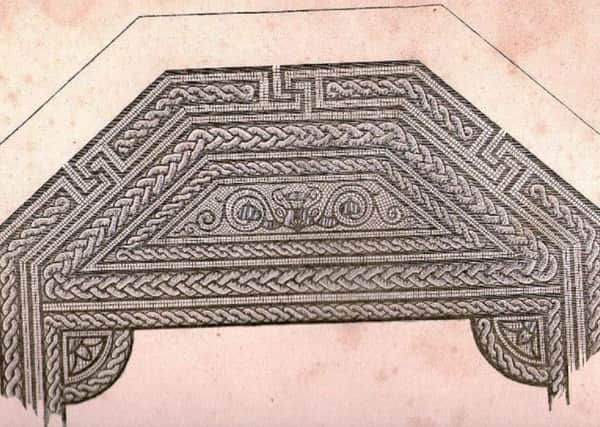Look back with Little: New discovery revives memories of villa finds


Significantly the editorial news for the same newspaper carried the caption ‘Amazing discovery puts Banbury on the map again’.
Study of Alfred Beesley’s 19th century History of Banbury reveals that in 1824 the Rev Charles Winstanley (a former curate of Wigginton) and a Mr Skelton had found evidence of a large villa at Manor Farm near that village.
Advertisement
Hide AdAdvertisement
Hide AdA search of a small part of the site revealed the foundations of two rooms with remains of tasselled pavement mosaic flooring, a small glass bottle, some Roman pottery as well as the crown of an arched brick flue or oven.
An unusual discovery was that of a small skeleton on the centre of the pavement of the larger room, not beneath it.
It seems likely that this was the same site which was the subject of a major news item in the Banbury Guardian for November 26, 1964. Readers were treated to a graphic description of the supposed rediscovery. ‘An attractive young archaeologist got down on her knees in a ploughed field at Wiggington on Saturday, scraped away a pile of earth and explained that under the surface was a large Roman villa’.
The archaeologist was Helen Sutermeister, a field officer representing the Oxford Excavations Committee.
Advertisement
Hide AdAdvertisement
Hide AdThis sixties dig had been led by John McTimoney who was a Banbury Osteopath living in Dashwood Road.
Accompanying him was his son Russell. When interviewed Mr McTimoney commented they had kept quiet about the dig pending the acquisition of sufficient information to arouse interest at the Ashmolean Museum.
Survival of the site evidence from the early 19th century appears to have owed much to ploughing with horses that allowed the outline of the villa to remain undisturbed.
The amateur efforts of the McTimoneys were clearly justified as more sophisticated ploughing would most likely have destroyed the evidence and their approach was gaining an understanding of the full extent of the villa.
Advertisement
Hide AdAdvertisement
Hide AdIn pursuit of this objective Jeremy Gibson of the Banbury Historical Society promised support and help from willing members.
After a visit by the Ashmolean experts and a thorough exploration of the site the comment was made to the press that they believed that this was one of the most important villas in the Midlands. Amongst their finds was a coin bearing the head of one of the Emperor Constantine’s sons.
The next significant report in the Banbury Guardian relative to the Wigginton site came in the issue for January 31, 1965.
This aroused considerable excitement as it recorded that no less an expert than Professor Sir Ian Richmond had paid a visit.
Advertisement
Hide AdAdvertisement
Hide AdHe had occupied the chair of the Archaeology of the Roman Empire at Oxford University and had written the Pelican History of England on Roman Britain for Penguin Books published in 1955.
Accompanying him on the site had been Jack Fearon who led the Banbury Historical Society team.
The professor promised Jack that he would try to get expert help for the excavation work. One idea floated was that the work could be treated as a training dig for archaeological students.
By September 8, 1965, the Banbury Advertiser was able to report that many fine mosaics had been found, there was clear evidence that there had been extensions to the original villa in the 3rd and 4th centuries. This particular discovery was down to helpers from the Ministry of Public Buildings and Works as well the Banbury Historical Society team.
Advertisement
Hide AdAdvertisement
Hide AdIt came as no surprise to anyone when the Guardian revealed that several years would be needed to excavate the site properly.
A response to this news came from farmer Mr H C Frogley that he would leave two acres of the site unworked. This evoked the hope that at least the central part of the villa could be examined in the summer of 1967.
Sadly for all concerned the November issue of Cake and Cockhorse announced the untimely death of Professor Richmond.